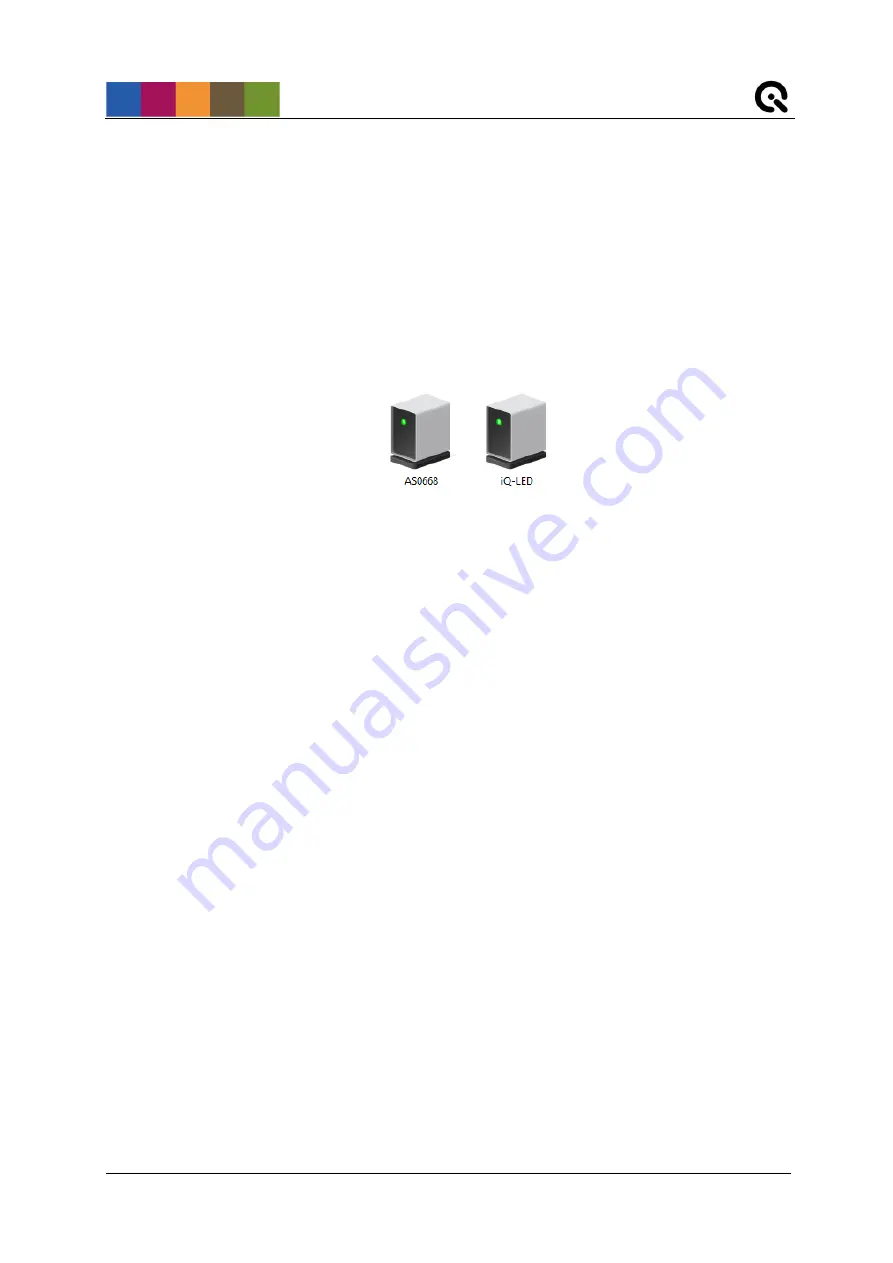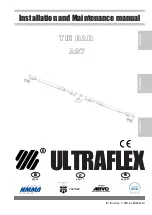
Error! Use the Home tab to apply Überschrift 1 to the text that you want to
appear here.
Image Engineering
Error! Use the Home tab to apply Titel to the text that you want to appear here.
Seite
6
von
11
3.2 Connecting the hardware
1. Connect the power cord to the power supply on the back of CAL-3XL.
2. Connect the USB cable to the CAL3-XL and your PC.
3. Turn on the CAL3-XL; the power switch is located beside the power supply.
4. Connect the spectrometer to the PC using the USB cable. The system will install the
spectrometer and the iQ-LED drivers on your PC, this will take a few seconds.
5. You can check the installation in your hardware manager.
Figure 3: Hardware Manager: active iQ-LED and spectrometer
3.3 Camera positioning
Requirements on your camera (device under test, DUT):
•
maximum device diameter inside diffuser: between 100 and 150 mm
•
lens depth
inside
diffuser
(see Figure 4: positioning of DUT in front of CAL3-XL):
recommended
:
75 mm
1
minimum:
65 mm
maximum:
85 mm
Ensure that
•
the lens is exactly in the center of the diffusor and it is not tilted
•
the front end of the lens is ideally positioned at a depth of 65-85 mm inside the diffusor
•
the angle of view of the lens does not exceed 180°
•
if you are doing multiple measurements and need comparable results, the camera
needs to be positioned at the exact same location and in the same orientation
throughout the measurements to avoid deviating results.
Not fulfilling these requirements will lead to an inhomogeneously illuminated field of view and a
uniformity of less than 90%. The easiest way to align the camera correctly is to use the included
4-prong alignment aid (see 3.4) and the optional, soon to be available, iQ-Align-XL.
1
A depth of 75 mm has been determined as the optimum to ensure the highest uniformity for fisheye cameras with an angle of
view of about 180°. This depth will be indicated by the included 4-prong alignment aid. For wide angle cameras with an angle of
view smaller than 18
0°, please see chapter 3.4 “Using the included 4-prong alignment aid”.




























